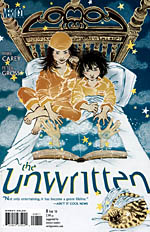 Written by Mike Carey
Written by Mike Carey
Art by Peter Gross
32 pages, color
Published by Vertigo/DC Comics
So often, a new title starts with so much promise and then slowly drains it away. With The Unwritten, it’s refreshing to have a series where the first issue made me eager for more, and has continued to build on that momentum in great leaps and bounds. I’ve enjoyed how Mike Carey’s scripts not only are about the mysterious world of books and what lies beyond them, but about the effect these characters have on the real world as public opinion goes into an uproar over the real-life Tom Taylor’s actions. Here, though, The Unwritten takes a side trip into two children and how their obsession over the Tommy Taylor novels affects them. It’s a smart way to show off not only the moment of obsession, but just how powerful these books are to their readership. In another writer’s hands an interlude showing why Tom Taylor’s current nemesis (Governor Chadron, the head of the prison) hates Tom so much might have felt like it was cheating, giving such an aside to a minor character. With Carey, though, it actually feels like an integral part of the story, seeing just how Chadron’s two children are affected by the imprisonment of Taylor.
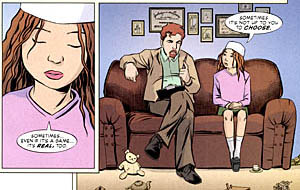 It’s also nice to see that even when given nothing fantastical to drawn, Peter Gross is able to deliver in spades. Sure, some scenes set in the prison play to what you’d expect from Gross’s art; lots of stonework and sharply constructed buildings, even amidst doom and gloom. I like the quieter moments that Gross draws here, though; Cosi at the therapist gives her a strange mix of resignation and faith about her, and watching Chadron interact with his children makes him feel that much more human as you see the conflict play out on his face. If you aren’t reading The Unwritten, the first collection is due out in early January 2010 and it’s well worth your while. Easily one of the best new series of 2009. Check it out.
It’s also nice to see that even when given nothing fantastical to drawn, Peter Gross is able to deliver in spades. Sure, some scenes set in the prison play to what you’d expect from Gross’s art; lots of stonework and sharply constructed buildings, even amidst doom and gloom. I like the quieter moments that Gross draws here, though; Cosi at the therapist gives her a strange mix of resignation and faith about her, and watching Chadron interact with his children makes him feel that much more human as you see the conflict play out on his face. If you aren’t reading The Unwritten, the first collection is due out in early January 2010 and it’s well worth your while. Easily one of the best new series of 2009. Check it out.
Purchase Links: Amazon.com | Powell’s Books
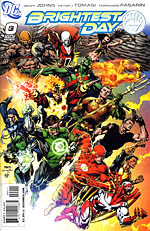 Written by Geoff Johns and Peter J. Tomasi
Written by Geoff Johns and Peter J. Tomasi
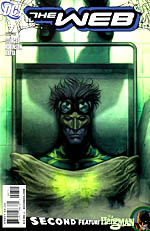 Written by Matthew Sturges and John Rozum
Written by Matthew Sturges and John Rozum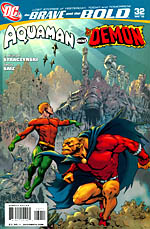 Written by J. Michael Straczynski
Written by J. Michael Straczynski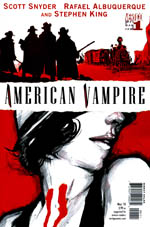 Written by Scott Snyder and Stephen King
Written by Scott Snyder and Stephen King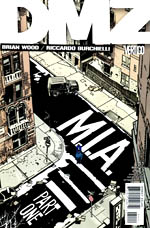 Written by Brian Wood
Written by Brian Wood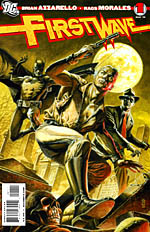 Written by Brian Azzarello
Written by Brian Azzarello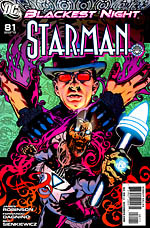 Written by James Robinson
Written by James Robinson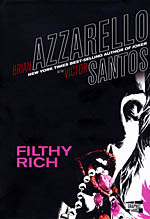 Written by Brian Azzarello
Written by Brian Azzarello Written by Mike Carey
Written by Mike Carey It’s also nice to see that even when given nothing fantastical to drawn, Peter Gross is able to deliver in spades. Sure, some scenes set in the prison play to what you’d expect from Gross’s art; lots of stonework and sharply constructed buildings, even amidst doom and gloom. I like the quieter moments that Gross draws here, though; Cosi at the therapist gives her a strange mix of resignation and faith about her, and watching Chadron interact with his children makes him feel that much more human as you see the conflict play out on his face. If you aren’t reading The Unwritten, the first collection is due out in early January 2010 and it’s well worth your while. Easily one of the best new series of 2009. Check it out.
It’s also nice to see that even when given nothing fantastical to drawn, Peter Gross is able to deliver in spades. Sure, some scenes set in the prison play to what you’d expect from Gross’s art; lots of stonework and sharply constructed buildings, even amidst doom and gloom. I like the quieter moments that Gross draws here, though; Cosi at the therapist gives her a strange mix of resignation and faith about her, and watching Chadron interact with his children makes him feel that much more human as you see the conflict play out on his face. If you aren’t reading The Unwritten, the first collection is due out in early January 2010 and it’s well worth your while. Easily one of the best new series of 2009. Check it out.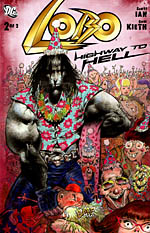 Written by Scott Ian
Written by Scott Ian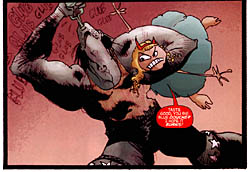 Lobo: Highway to Hell is a two-issue mini-series that manages to shoot its credibility on the first page. How else can you talk about an opening line of, "Head feels like Motorhead is raping it," after all? Between that and mentions of the television show Lost (no, really), it’s the first sign that something is slightly off. From there we get unfunny jokes stretched out into dozens of pages, and an entire second issue where Lobo in Hell is supposed to be funny, but it’s really just the reader in Hell because the issue never seems to end. Kieth’s heart doesn’t appear to be in this either; I understand that sometimes Kieth deliberately devolves his style, but Lobo: Highway to Hell looks like it was drawn on a napkin more times than not. This comic is embarrassing for DC Comics as a publisher. Don’t fall into the same well of regret that I’m currently floundering in. If you haven’t made that mistake already, avoid this book.
Lobo: Highway to Hell is a two-issue mini-series that manages to shoot its credibility on the first page. How else can you talk about an opening line of, "Head feels like Motorhead is raping it," after all? Between that and mentions of the television show Lost (no, really), it’s the first sign that something is slightly off. From there we get unfunny jokes stretched out into dozens of pages, and an entire second issue where Lobo in Hell is supposed to be funny, but it’s really just the reader in Hell because the issue never seems to end. Kieth’s heart doesn’t appear to be in this either; I understand that sometimes Kieth deliberately devolves his style, but Lobo: Highway to Hell looks like it was drawn on a napkin more times than not. This comic is embarrassing for DC Comics as a publisher. Don’t fall into the same well of regret that I’m currently floundering in. If you haven’t made that mistake already, avoid this book.